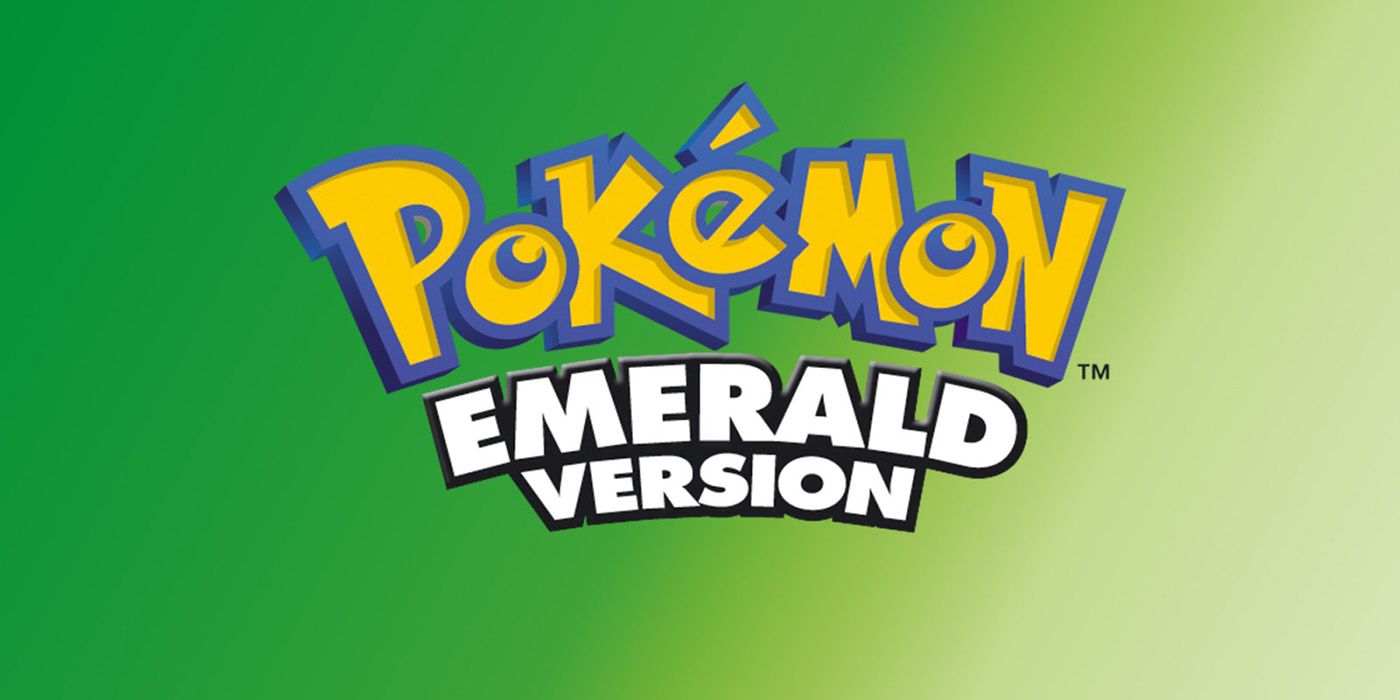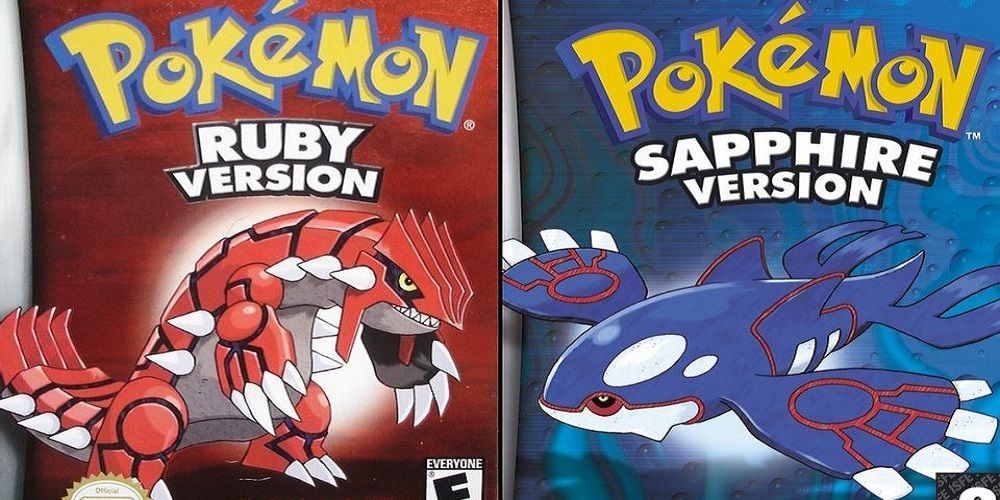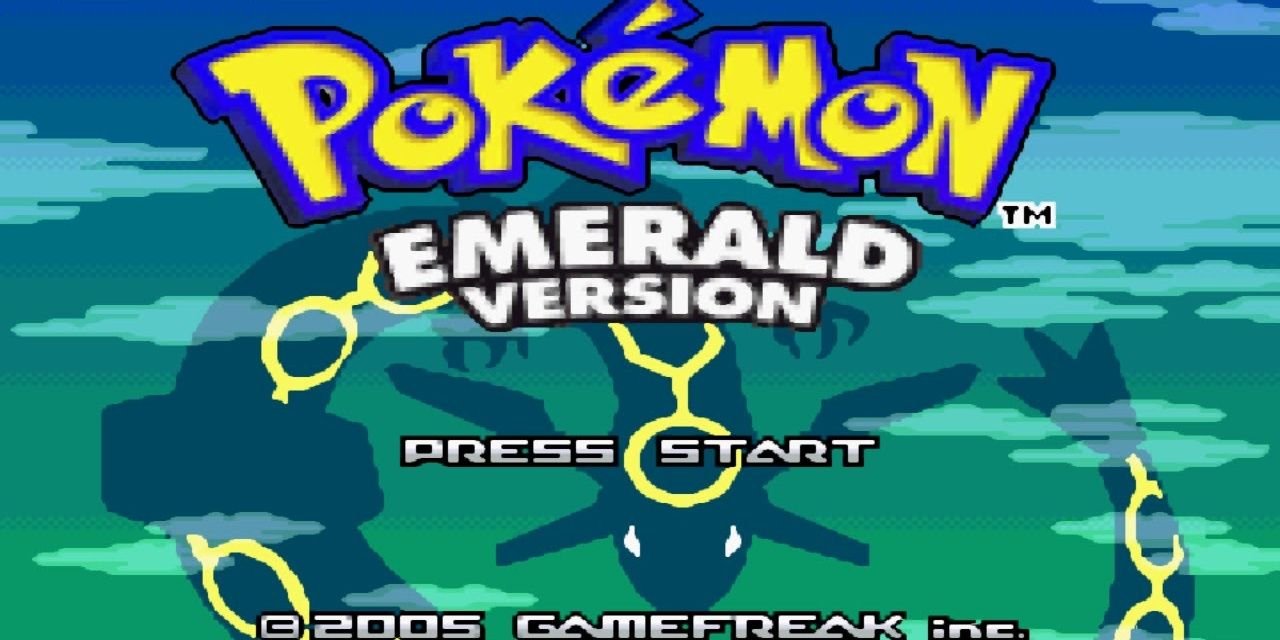
The third generation of Pokemon games, Pokemon Ruby, Pokemon Sapphire, and Pokemon Emerald, all feature a lot of similarities but stand out from each other with quite a few differences. Much like the first two generations of Pokemon games, Gen 3 has aspects that are version exclusive to each of its individual titles. This can be anything from individual Pokemon and their evolutions to story aspects to how whole areas of the game are approached.
Like every generation of Pokemon games, both Pokemon Ruby and Sapphire share similarities with only minor differences, something that changes with the series’ release of Pokemon Emerald. It begins to make more noticeable changes to Gen 3 in several different ways. The game makes large strokes with how its main story is done, both in its conflict and the conclusion, alters large swaths of post-game content, and unifies certain aspects of the Hoenn region that were divide in the original Ruby and Sapphire games. In short, Emerald takes the foundation that Pokemon Ruby and Sapphire provided and then tears it down for a near complete remodel.
RELATED: The Major Similarities and Differences Between Pokemon Red and Blue

Pokemon Ruby and Sapphire maintain a lot of similarities to each other through the geography of the region and their stories. Both games' main story is centered around the same premise, with only minor alterations to how it is told. In Ruby, the villainous Team Magma seeks to awaken the legendary ground-type Pokemon Groudon, while in Sapphire, it is Team Aqua that seeks to awaken the legendary water-type Pokemon Kyogre. Aside from the villains and legendary Pokemon, the story aspects for Ruby and Sapphire remain almost identical.
At the same time, Gen 3 is rather unique as it is the only time that two different Pokemon villain teams are the antagonist of the main stories in core games. Each of these groups has their own costume design and unique leader. While their difficulty is not much different than villains in other games, their goals felt unique at the time.
The major ways that Pokemon Ruby and Sapphire differ from each other comes through their game exclusive Pokemon. Like its predecessors, Gen 3 has certain Pokemon that are available in Ruby but not Sapphire and vice versa. This only includes a few Pokemon overall, but the list does feature a few particularly important members:
- Seedot and its evolutions are available in Ruby but not Sapphire while Lotad and its evolutions are available in Sapphire and not Ruby. Both final evolutions of these lines require stones to evolve. Nuzleaf will evolve into Shiftree and Lombre will evolve into Ludicolo when given a Leaf Stone and Water Stone, respectively.
- Mawile is in Ruby but is replaced by Sableye in Sapphire.
- Zangoose is in Ruby but is swapped with its mortal enemy Seviper in Sapphire.
- The psychic rock Pokemon Solrock is available in Ruby, while its complimentary Lunatone takes its place in Sapphire.
- The Eon Duo are split with Latios in Ruby and Latias in Sapphire.
- Gen 3’s mascots Groudon and Kyogre are split between Ruby and Sapphire, respectively with their likeness being that games' main box art.
RELATED: Pokemon: All the Differences Between Gold, Silver, and Crystal

Pokemon Emerald takes all the information from its predecessors and proceeds to set up its own unique story. In Emerald, both Team Magma and Team Aqua are the culprits. With both their goals of awakening Groudon and Kyogre respectively realized, it falls on the player to awaken the legendary Pokemon Rayquaza to cease the other two Pokemon's battle. Emerald also makes gameplay changes that are connected to the story and other areas of the game like its post story content. This includes changes like...
- Both Lotad and Seedot’s evolutionary lines being available for capture.
- Both Sableye and Mawile are now available for trainers to catch.
- Unlike the still Pokemon sprites that were used in Ruby and Sapphire, Emerald has animated Pokemon sprites that end with the still sprite’s image.
- Several areas of the game received redesigns and graphical changes in Emerald. One of the most noticeable of these is the Mosdeep Space Center, which received a complete overhaul on the outside along with the town’s foliage.
- Team Magma and Team Aqua’s hideouts are not sealed after beating Tate and Liza in Pokemon Emerald. The hideouts are also separated now. Team Magma’s hideout can be found in Mt. Chimney, while Team Aqua’s hideout remains in the original location in Lilycove City.
- Both Groudon and Kyogre can be caught in Pokemon Emerald at the Terra and Marina Caves, respectively. Only one of them will appear at a time, but once the player has caught or defeated one, the other can be caught or defeated as well.
- The player now has a choice over whether it is Latios or Latias that roams Hoenn for them to catch after the Elite Four is beaten. The one that is not selected was available to catch if the player got an Eon Ticket and traveled to the Southern Island.
- Deoxys is now obtained in its speed form when caught.
- Emerald does more with double battles, as gym leaders can be re-challenged after the story to participate in double battles. The player can also encounter more double battles by having at least two conscious Pokemon on their team and being seen by two other trainers simultaneously.
- Gym leaders also received changes to their main teams in the game.
- Along with other post game content, the Battle Tower area from Sapphire and Ruby is changed to the Battle Frontier. This change also opens up the option to catch both Sudowoodo and Smeargle as these two Pokemon were not available in either Ruby or Sapphire.
- It is now also possible to obtain both fossil Pokemon.
- Emerald also removes some Pokemon as well, with Surskit’s evolutionary line, Meditite’s evolutionary line, Roselia, Zangoose, and Lunatone all unavailable for capture in the game. The final two are kind of odd ones out as Solrock and Seviper are available to catch in Pokemon Emerald.
Pokemon Emerald also makes some late game changes with the Hoenn Pokedex. Once the player has beaten the Elite Four and entered the Hall of Fame, they will be transported back to the starting town of Littleroot. Here Professor Birch will upgrade the player’s Pokedex to the National Dex. This upgrade allows the player to trade with any Gen 3 game including Pokemon Fire Red and Pokemon Leaf Green, the remakes of the first generation of Pokemon games. Trading Pokemon becomes necessary to complete the National Dex and receive a reward from Professor Birch. After the National Dex is complete, Professor Birch will offer players a choice of Chikorita, Cyndaquil, or Totodile, which many fans will know as the three starter Pokemon from Generation 2's Gold, Silver, and Crystal.
In all, Emerald, Ruby, and Sapphire sport some of the most changes from the early days of the series. While each generation of games is known for their exclusive Pokemon and separation of legendary Pokemon, not as many make changes the same way that Gen 3 does.
MORE: Pokemon Brilliant Diamond and Shining Pearl Sticking to Its Roots Is A Good Thing

